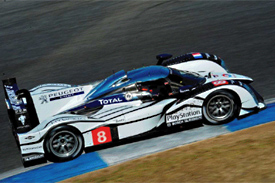An auction tomorrow will be for a four-seater steam “quadricycle” with a range of 20 miles on 40 gallons of water — the 1884 De Dion Bouton Et Trepardoux Dos-A-Dos Steam Runabout.
De Dion’s little quadricycle can claim to be the first family car, despite its arcane power source. What makes it different from road-going locomotives dating back to Cugnot’s 1770 tractor is its sophisticated boiler, which can be steamed in 45 minutes. It is also compact at only nine feet long and relatively light at 2,100 pounds. But, it has four wheels, seats four, and can be driven by one person — like a modern car.

One of the oldest still functioning vehicles, and a promising early design, but it is said to have been expensive even back in 1884.
By 1889 you could buy a tricycle for 2,800 francs ($540) and a quadricycle for 4,400 francs ($850).
Those prices were certainly out of the reach for the average enthusiast, when a French laborer might make five francs a day, and sales were confined to the very rich.
Hmmm, 5 francs a day x 365 days = 1825 francs. So a tricycle would be double an annual salary. An American laborer might make $120 a day x 365 days = $43,800. So a car today, in relative terms, is about half the price of one “confined to the very rich” in the 1890s? That’s like saying a $60,000 car today is confined to the very rich. Am I missing something?
Price was surely a factor but it seems the real reason for demise was the allure of gasoline.
By 1893 gasoline was the up-and-coming power source, and steam devotee Trepardoux left the firm and presumably went back to toys. A celebrated duelist and ladies’ man, De Dion was keen on animal welfare and made a few large steam trucks in an effort to free horses from hauling heavy carts, and then he and Bouton focused on gasoline automobiles. They patented their transmission in 1895 and dominated the early years of the 20th century, with De Dion engines powering some of the first great marques, like Renault, Pierce-Arrow and Delage.




